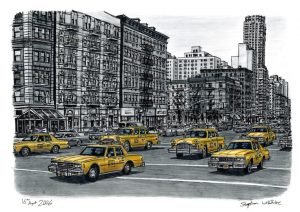BY AISHWARYA VUPALLA | SQ WRITER | SQ 2017-2018
[hr gap=”null”]
When people are really good at doing something, they’re often called talented. If they’re great at doing something, they’re called geniuses. However, if they are so incredible that their talent is unmatched and beyond comparison to their normal developmental abilities regarding language and emotion, they’re considered savants. Savant syndrome is usually seen in individuals with autism; regardless of their neurological condition, which can contribute to many developmental disabilities, these savants possess extraordinary and unimaginable talent in a specific field or skill. Some are known to be able to play instruments at an advanced level just after listening to a concert for the first time. There are several incredible savants who raise questions about how the neurological changes due to autism can lead to such incredible skills. Why does this happen in some autistic individuals but not all of them? This is a question that still hasn’t been answered, but there are several theories that may serve as explanations for this unique condition.
Savant syndrome is usually noticed in children who are diagnosed with autism spectrum disorder (ASD), a disorder characterized by impairments in social communication, repetitive patterns of behaviors, and delays in language development. Not all individuals with ASD are alike, as it is a spectrum disorder, meaning behaviors and severity of impairments vary between individuals. This is why some have savant syndrome and others don’t. Savant syndrome is very rare and has a prevalence of about 10% among individuals with ASD.1 Most autistic savants have extraordinary skills in areas such as math, memory, art, or music. These individuals have unique abilities, which can include remembering people they’ve only met once after several years, mentally finding the square root of large numbers in a few seconds, and even drawing realistic scale images of cities after seeing the location only once. For example, Richard Wawro, an artist with autism, is legally blind, draws with crayons, but sells impeccable and beautiful art for thousands of dollars for famous individuals like the Pope.2 Stephen Wiltshire is an autistic savant who can draw replicas of different locations (Figure 1), scenes from movies or parts of his life after witnessing them for a limited amount of time under which a normal person would not be able to acquire the level of detail he is able to capture.3 In regards to music, Leslie Lemke, another blind autistic savant, could skillfully play Tchaikovsky’s first piano concerto after just listening to it for the first time from a television show.3 How and why this occurs is still a mystery; however, there have been certain observations regarding the brains of autistic savants.

There is a specific pattern that is observed during the development of these prodigious skills: replication, improvisation, and creation.3 The skills of most savants arise from the fact that they have incredible memories, so they are able to replicate things that they have seen or heard. With the ability to replicate, savants like Leslie Lemke can then try to improvise and create their own music or art. Even Stephen Wiltshire has improvised and added his own scenes and personal touches to his realistic landscape art pieces.3 In a way, these skills follow the normal pattern of how people usually develop other basic skills. The only difference is that savants have an extensive memory which allows them to go beyond certain limits when it comes to specific abilities.
Most of the skills that savants exhibit seem to be oriented to the right hemisphere of the brain, which is related to tasks regarding the arts and creativity, instead of the left hemisphere of the brain, which focuses on logic and functions like language specialization.2 As children with autism have difficulties in language development, this observation makes sense, but it makes one wonder what differences exist within the development of the right and left hemisphere of the brain in autistic savants. Most autistic savants do exhibit creative abilities when it comes to art and music, which demonstrates the impact of the right hemisphere on their extraordinary skills. This is one theory among a limited set of theories because there has not been much research or many appropriate studies looking at specific neurophysiological aspects of savant syndrome.4
One theory proposed by psychologist Darold Treffert suggests that the skills of autistic savants have developed as compensation for their other limited abilities. An argument that invalidates this theory brings up the question of why other individuals with limited abilities or developmental disabilities don’t acquire such talents like savants even if they did try compensating in some way. Although there is no concrete understanding of these conditions, the enigma that it is has inspired movies like the Rain Man1, ed to the creation of incredible art and music, and, in a way, given a second chance to individuals with autism who were once misunderstood by a society that couldn’t speak the same “language” as them.
Sources:
- https://www.autism.com/understanding_savants
- https://www.wisconsinmedicalsociety.org/professional/savant-syndrome/resources/articles/the-autistic-savant/
- http://rstb.royalsocietypublishing.org/content/364/1522/1351.short
- http://www.tandfonline.com/doi/abs/10.1080/23279095.2016.1159563
- http://gempaklah.blogspot.com/2010/03/disabled-artists.html
